how water is purified on the way from a well to a private cottage
We at BARRIER have been studying this water path for many years and are trying to make it easier by improving our own filtration systems for cottages. In this article, we will trace the path of water from a well to a consumer in a private house using the example of our cottage purification system, show the composition of water from a well before and after filtration, and tell in detail about each stage.
The beginning of the path is a well
To deliver water to a private home, a well is usually drilled to the aquifer. The water from it will probably not be clean because it flows underground.
For example, groundwater often comes into contact with different rocks and minerals. Anaerobic bacteria, living underwater without oxygen, obtain energy by “eating” rock minerals. At the same time, they saturate the water with gases and salts. For example, they convert sulfides into sulfates, which dissolve in water.
Other impurities may also appear in the water: iron and manganese in different proportions, organic particles, sand and rust are mixed into it. Underground streams can also receive more exotic impurities, feeding from rains, floods, and melted snow.
Getting to know water: water analysis for impurities
When you open the kitchen sink tap, water with many impurities begins its journey into your private home. Moreover, the composition of impurities in water may differ from region to region and even between nearby wells. It often depends on depth—there may be many different aquifers in one area.
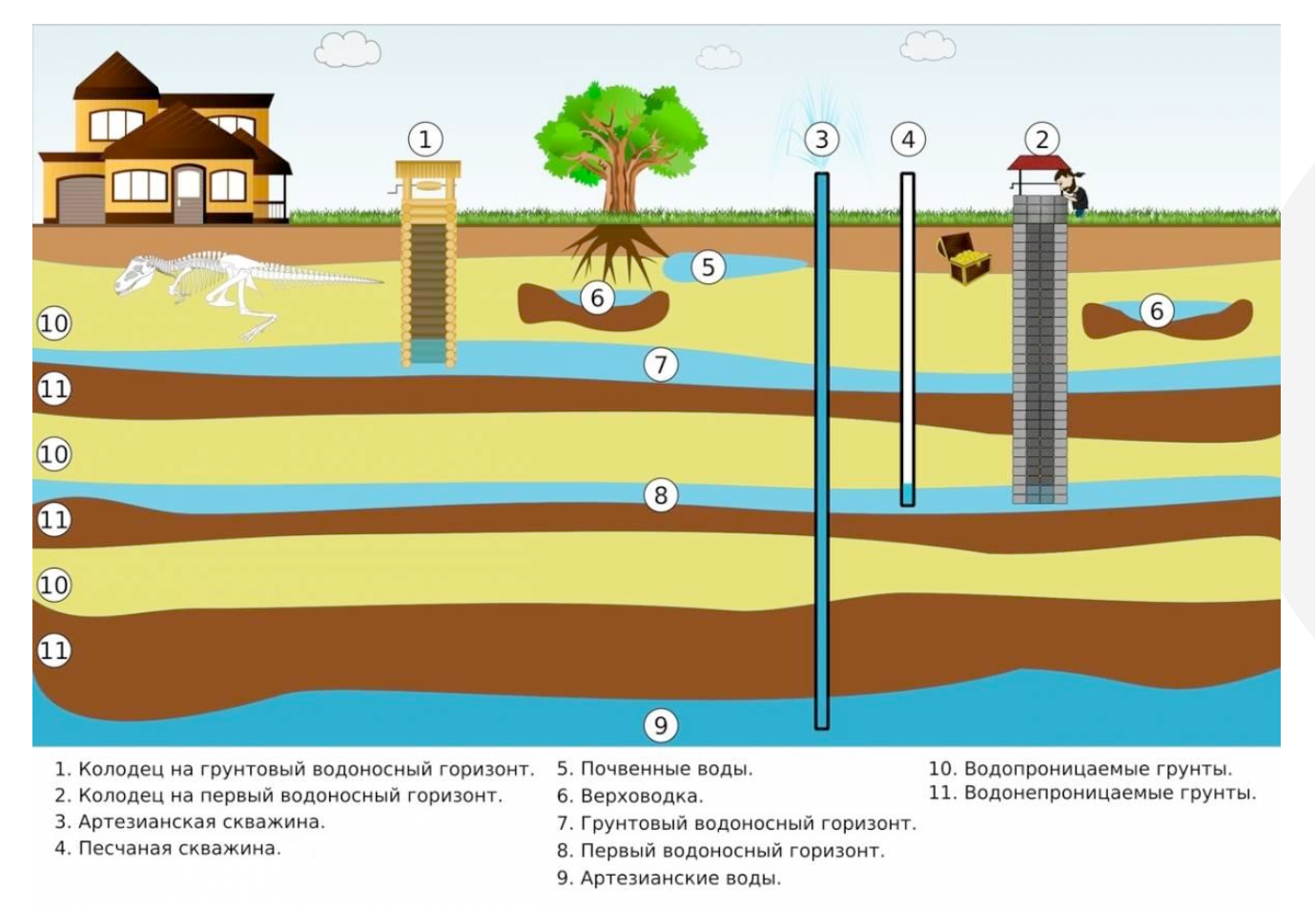
The water may be cloudy, with a noticeable odor, and full of small hydrocarbons and other organic matter. Or hard and yellow, harmful due to excess iron and manganese. Depending on what kind of impurities and in what quantities the water has collected, its steps on the path to purity will differ, and with them, our purification system.
To get to know the water better and accurately determine the composition of impurities in it, we take samples and conduct laboratory analysis. This is part of the work service departmentwhich designs and services cleaning systems for our clients.
Water is tested for:
iron content;
permanganate oxidation;
content of hardness salts;
ammonium content;
nitrate content.
Additionally assessed:
the smell of water;
turbidity;
color;
general mineralization;
sulfate content;
chloride content;
pH value;
total alkalinity of water.
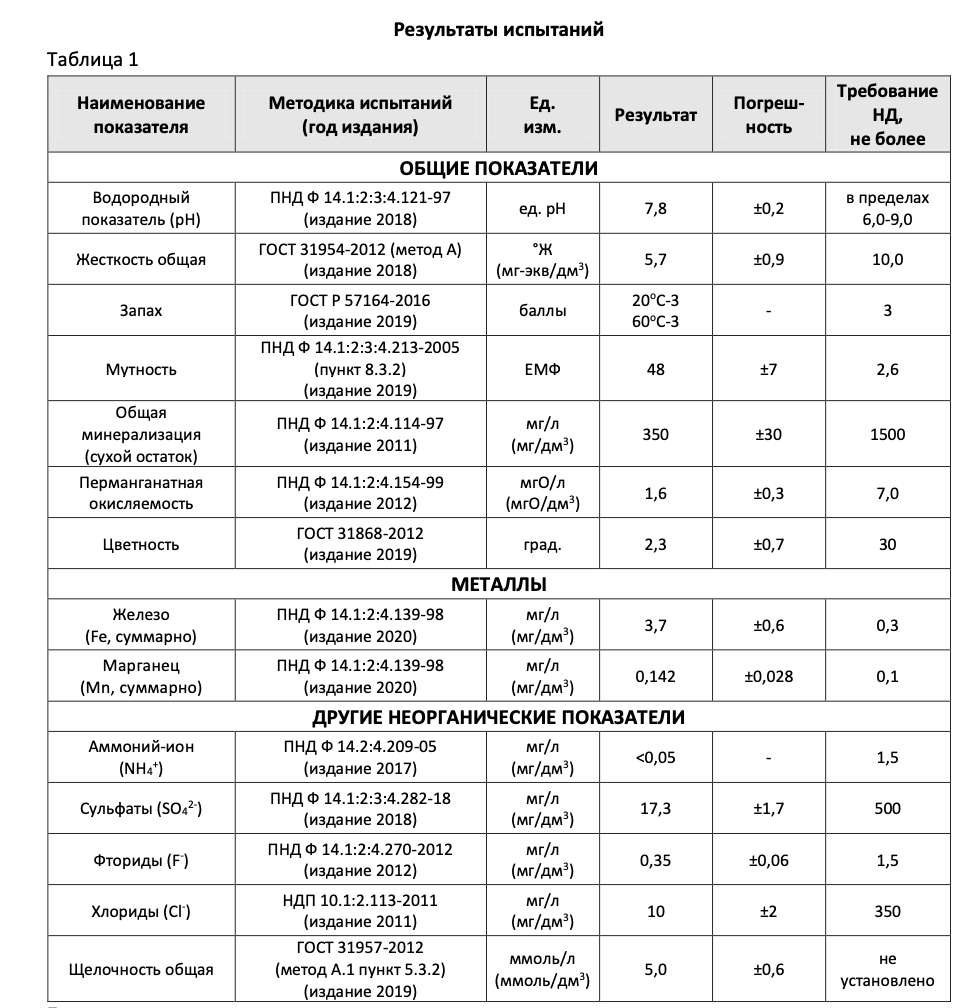
But at evening water intake the picture is different.
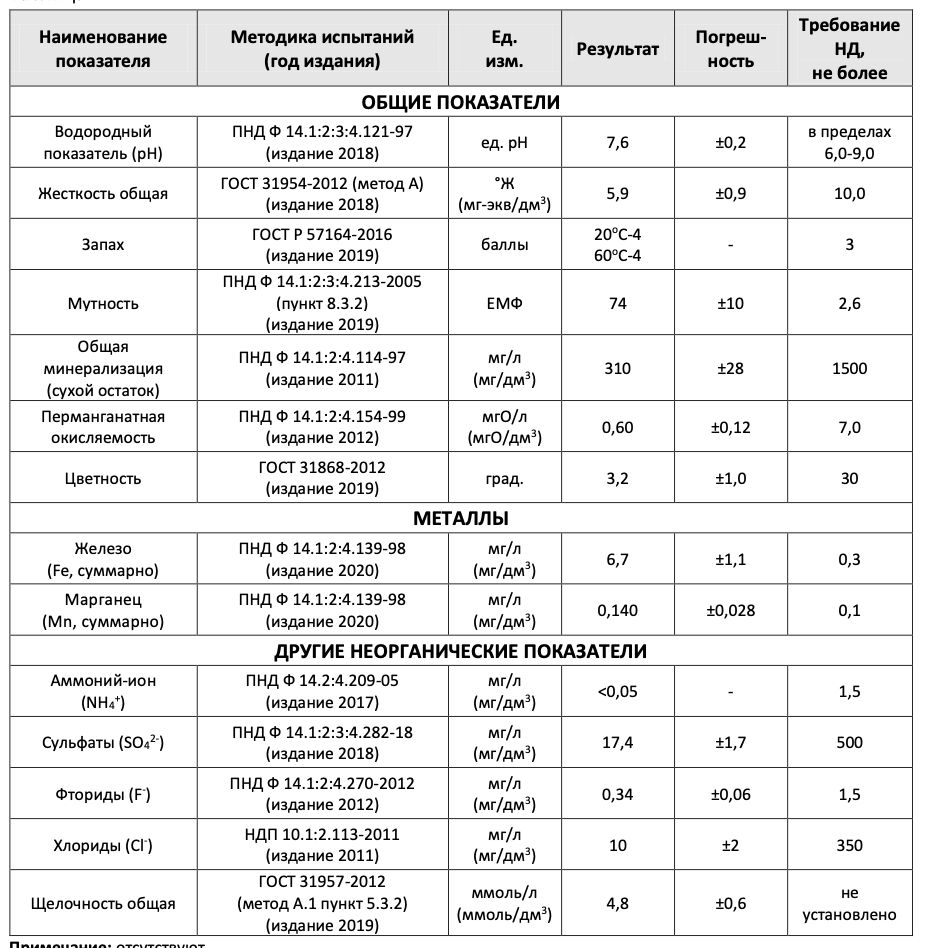
And here is an approximate map along which water follows its path to purity:
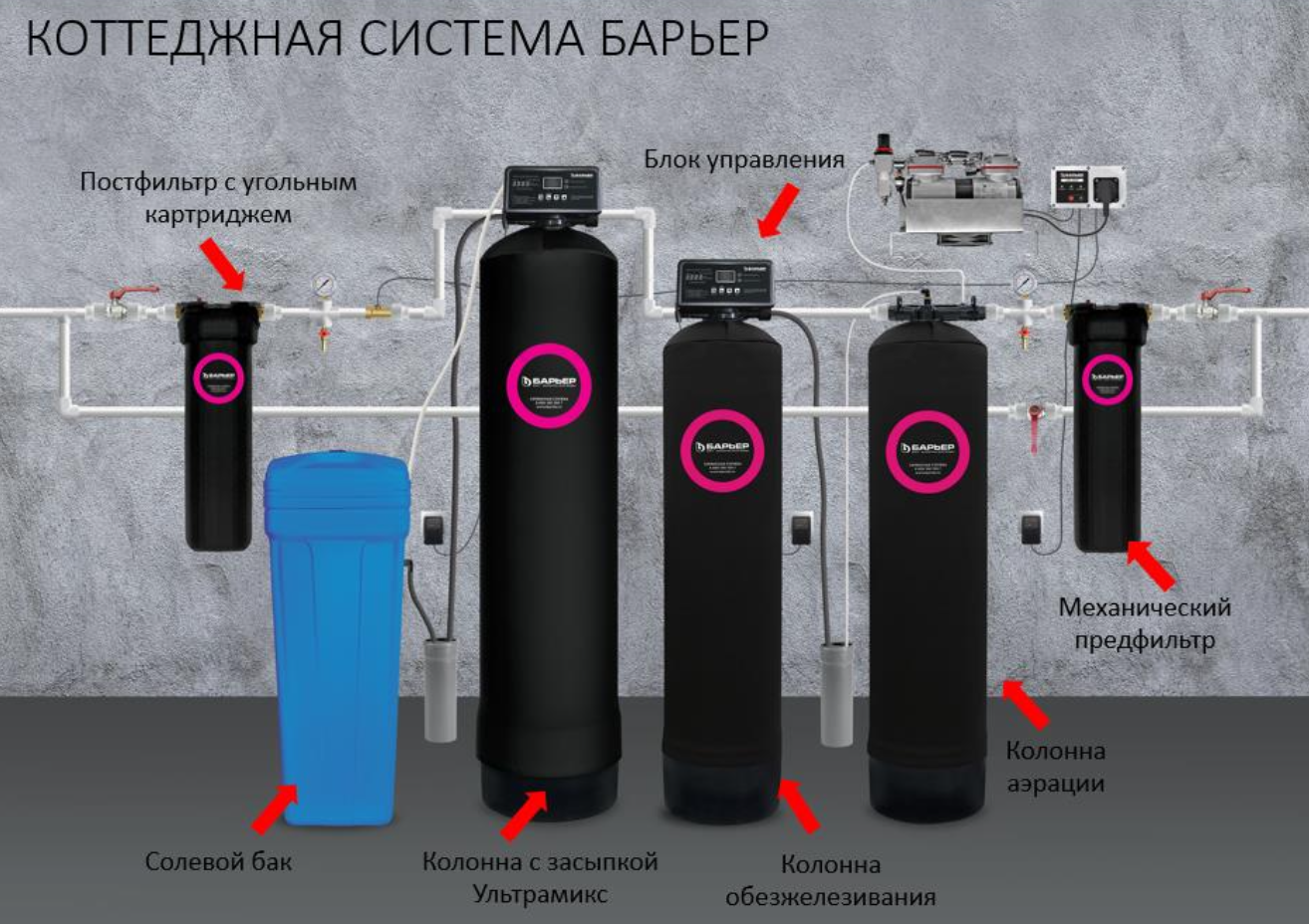
Water gets rid of sand and rust: mechanical cleaning
Now the water is not just cloudy and hard: it is full of grains of sand, small rust, and pebbles.
When water needs to be purified from such mechanical impurities, the easiest way is to place a dense barrier in its path – a strong metal mesh with small cells. It is this mesh that awaits water in the first step to cleanliness in a mechanical cleaning filter.
Most often, a mesh with holes of 100 microns is enough for water to undergo such cleaning. You can use a finer mesh – 40 microns. It will do the same job more thoroughly, but will create more resistance to the flow of water. To push water through such a filter, the pump will need to work better.
The water is purified, but the same mechanical impurities remain on the mesh. There are a lot of them in the water: it is useful to rinse the cartridge with the mesh manually at least once a month. Those who don't do this run the risk of water coming out of their taps over time with less pressure than before. This means that she has deposited enough sand and rust on the mechanical filter to partially block her way into the house.
As you know, water wears away stones. Mechanical impurities in it also sharpen the stainless steel mesh. Day after day, week after week, with varying pressure. An average of 2.5 cubic meters per week comes from a well to a private home. m. water. And after about 260 cubic meters (or two years), water inevitably destroys the stainless barrier: after two years of service, the mesh must be replaced.
The result of the first step is obvious:


But getting rid of mechanical impurities only does not make the water perfectly clean. This is not even the only factor influencing the turbidity of water; iron is no less involved here. Water cannot be removed from organic impurities or dissolved gases using a mesh, so there will be more than one stop on its way. While the water moves further to the tap in a private house.
Water is enriched with oxygen: aeration
The water has gotten rid of large mechanical impurities, now it is time to separate it and the gases.
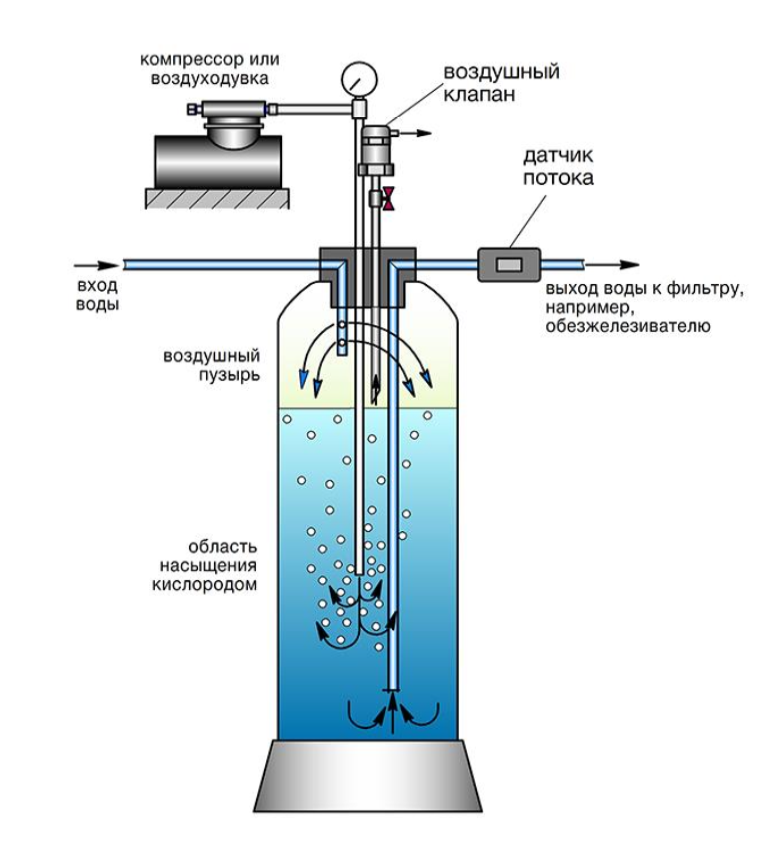
Water comes into contact with oxygen, which displaces hydrogen sulfide and other harmful gases from the water.

Oxygen also combines with soluble ferric hydroxide (Fe(OH)2) and converts a significant portion of it into insoluble colloidal ferric hydroxide (Fe(OH)3). Hydroxide and water are much easier to separate in the next stage of purification.
Iron in water constantly oxidizes in the natural environment: for example, when water is poured into a glass. But in some cases the area of contact between water and air is small, so the process proceeds slowly. During aeration, the water bubbles and gurgles, and a stream of air bubbles passes through it. The contact area between water and air increases significantly, so the oxidation of iron in the purification system occurs much faster.

Undissolved iron is separated from water: iron filtration
Aerated water is still full of iron, just in a different form.

To remove iron from water, two things are needed. First, the catalytic medium. It will accelerate the oxidation of dissolved iron that still exists in the form of Fe2+. Secondly, the appropriate filter mixture. It will finally remove almost all the iron from the water.
Water can interact in this way with several catalysts. Most often, manganese plays this role. For example, the basis of the catalytic mixture may be an aluminosilicate coated with manganese and iron oxides, or a porous material in the pores of which manganese dioxide is also fixed.
We use Ferromix catalyst based on sedimentary and igneous rocks. It helps cleanse water of both iron and manganese. You will need 650 cc. m. of water, or about five years, to wear out such filling in the filter.
As soon as water collides with the catalysts in the bed, undissolved iron will begin to interact with them and fall out in dense flakes. Those who have done a lot of laboratory work in chemistry have probably now remembered exactly what this unpleasant sediment looks like in a liquid cleared of iron.
The water then simply passes through the filter and leaves the iron behind.


The water, having become even cleaner, continues on its way to a private house.
Water is purified from hardness salts: purification from Ca2+, Mg2+
Well water is almost suitable for our domestic needs: there are no mechanical impurities left in it, no excess iron or unnecessary gases. All that remains is to rid it of unnecessary salts – cations Ca2+, Mg2+ and others that it still contains.
This requires water to interact with an ion exchange resin, which is granules with active chemical groups containing Na+ on the surface. As water passes through the resin, the calcium and magnesium cations in it replace the Na+ in these chemical compounds and become “stuck” in the filter.
Depending on the results of the water analysis, different types of mixtures containing ion exchange resin can be used for purification. We use our own Ultramix R. The water we are describing contained a lot of iron and was quite hard. But at the same time, it collected relatively few organic impurities underground.

Water at this stage can also be purified from organic matter. Organic particles are retained by the porous filter material through which the water passes. Most often this material is carbon or polymer sorbent. When water flows through them, large organic molecules get stuck in the pores, and water flows through them. In our backfill, the role of such a filter is played by the Oxisorb component.

As the ion exchange resin gradually releases the sodium ions it contains to the water, its ability to exchange is weakened. The exact period depends on water consumption and initial contamination.
To restore the sorption capacity of the ion exchange resin, you need to stop the flow of water into the house. Water cannot enter the filter while the saturated salt solution is washing the ion exchange resin. This way the resin returns all the necessary Na+ particles, and the main path of water itself into the house stops. Water cannot enter the filter because it is temporarily filled with saline solution.
Resin regeneration (also called rinsing because the resin is washed with brine) becomes a bottleneck in the water's path to purity. If you neglect washing, the water will not be clean enough. But it can simply prevent water from reaching the residents of the house who need it.
To expand this bottleneck, it is logical to carry out regeneration during those hours when water in the house is not used. To put it mildly, it is inconvenient for a person to carry out regeneration in manual mode. Therefore, in our system this is done by a smart control unit BARRIER Smart Valve. Do you consistently not turn on the water in your home at certain hours? Smart Valve will remember this, and it is during these hours that the water path will pause to regenerate the ion exchange resin. And then the water will continue its path from the well.
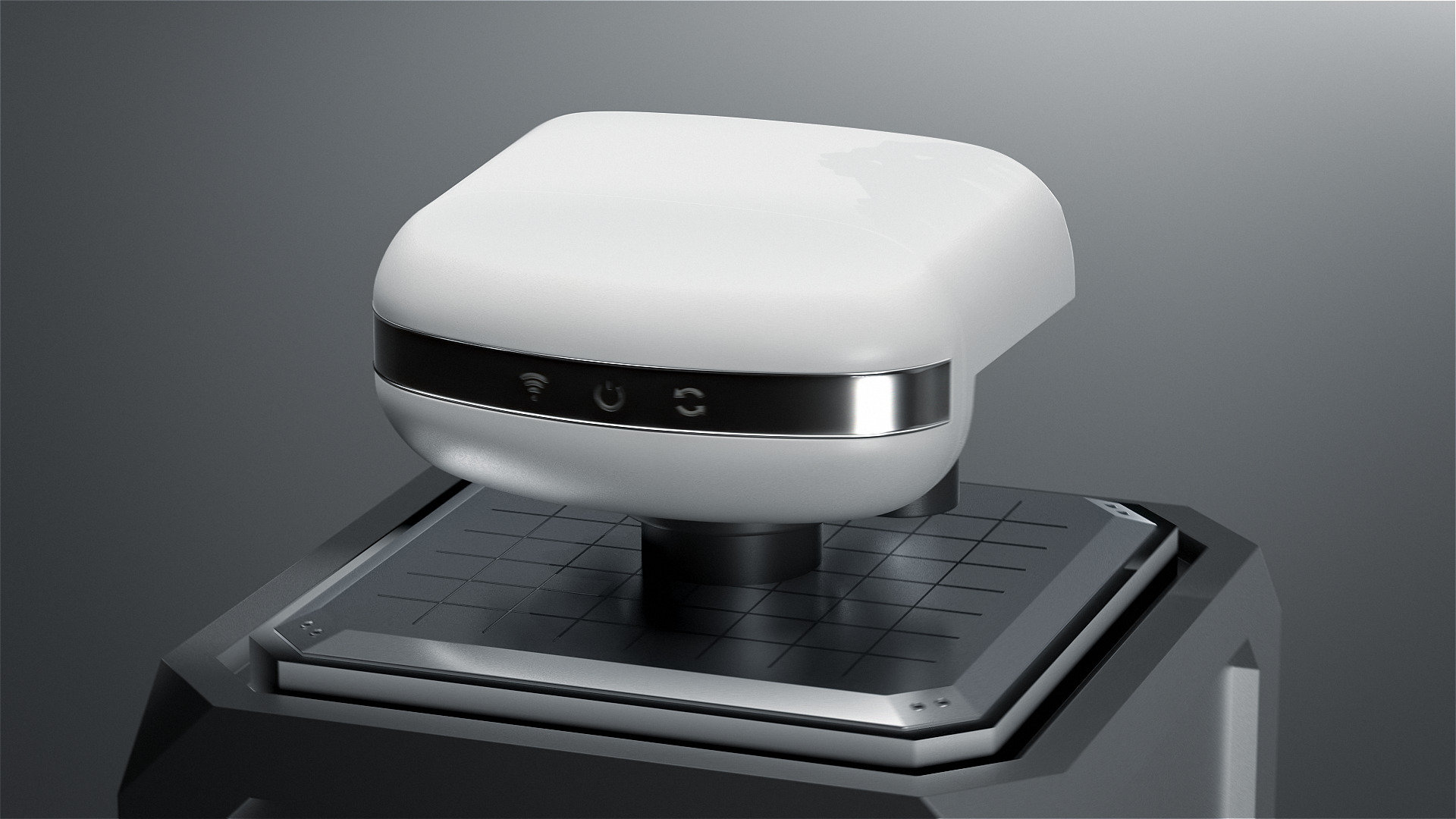

Water passes the control barrier – carbon filter
The water has already been cleared of all impurities that it could have received in the underground stream. The carbon filter is the last barrier on its way into the house. Usually it acts as a control barrier that traps contamination if it suddenly escapes the purification process along with the water. In addition, water passing through this filter is purified from those impurities that it could have received from the filter mixture.
After this final cleaning, the water enters the house. At this stage it looks like this:
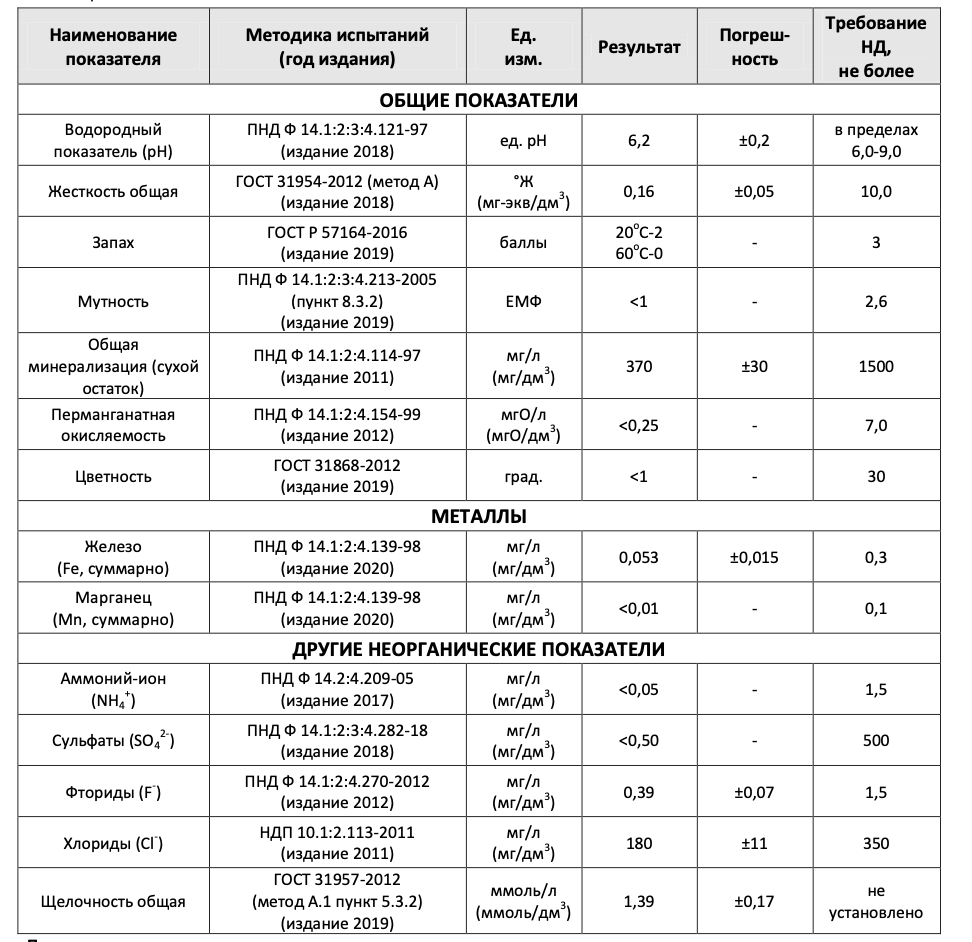
Water is filtered for drinking: filtration in the home
This completes the work of the cottage cleaning system; the water has made its way into the house. It can already be used for domestic needs – like water from the water supply in an apartment. However, before drinking it, it should be further purified, just like tap water. To do this, it is better to purify the water using a filter with a reverse osmosis membrane, which is compactly installed under the sink.
Water directly from a well is not suitable for such a filter: it contains too many different impurities, many of which are large. But thanks to repeated filtration, already purified water gets rid of even the smallest impurities that escaped past stages: residual hardness salts, bacteria, viruses, dangerous chemical compounds. At the exit we get crystal clear water, free of all impurities and suitable for drinking. There is no sand, rust, iron, harmful gases, salts or organic compounds left in it
At the same time, at the final stage of filtration, you can not only remove harmful compounds from the water, but also add something more useful instead of them. For example, enrich the water with the necessary amount of magnesium, calcium and silicon, which will make it healthier for drinking. In the natural environment, waters rich in these compounds are called mineral waters. And this saturation process occurs by installing the last stage – a reverse osmosis filter BARRIER Compact Osmo 100 M, which goes well with ready-made solutions from BARRIER for a private home. For more information about how BARRIER Compact Osmo 100 M works and enriches water with minerals, you can read on our blog.
***
At first glance, knowledge about water purification is useful from a practical point of view: it helps to better understand what kind of water you use every day and whether it can be improved. However, in our opinion, this is not the only reason to know more about how muddy, hard, sandy and rusty water from an underground stream turns into clear water.
For many people, the path of water from a well to a house or apartment seems instantaneous, so it is often perceived as something ordinary: you just turn the tap and the water flows. However, realizing the complexity of the cleaning process forces us to look at this process from a new perspective. Understanding that water goes through a long chain of complex purification steps turns it into something more valuable than just an ordinary resource. We strive to share this awareness and deeper respect for water by sharing its journey to purity and the special features of that journey.





